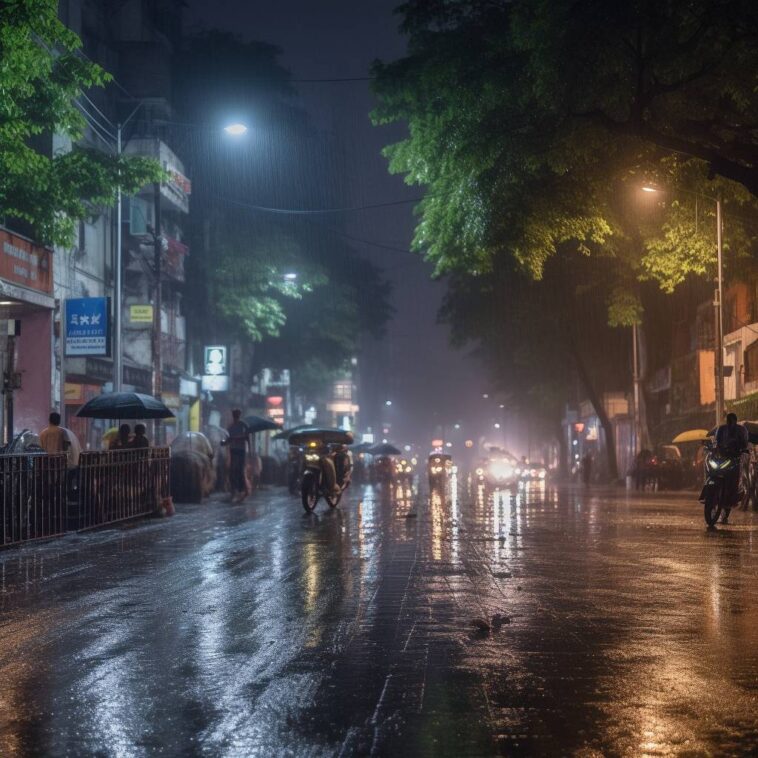In a meteorological marvel, the monsoon season has simultaneously graced both Delhi and Mumbai for the first time since June 21, 1961. This unusual occurrence has been confirmed by the India Meteorological Department (IMD), marking a significant event in India’s climatic history.
While the monsoon arrived in Delhi two days ahead of schedule, it made its entry into Mumbai two weeks later than expected. The normal onset dates for the monsoon are June 27 for Delhi and June 11 for Mumbai. The simultaneous arrival of the monsoon in these two cities, located over 1,430 kilometers apart, has not been witnessed for 62 years.
The monsoon’s arrival in Delhi was marked by heavy rainfall, with the city’s primary weather station, Safdarjung Observatory, logging 48.3 mm of rainfall in the 24 hours leading up to 8:30 am on Sunday. Other stations in Delhi, including Dhansa, Jafarpur, Lodi Road, Ayanagar, Mungeshpur, and SPS Mayur Vihar, also recorded significant rainfall, leading the IMD to term the monsoon activity over Haryana, Chandigarh, and Delhi as ‘vigorous’.
Meanwhile, Mumbai experienced a delayed but intense monsoon onset. The Colaba Observatory, representative of the island city, recorded 86 mm of rainfall, while the Santacruz weather station, representative of the suburbs, registered 176.1 mm of rainfall in the same 24-hour period.

The IMD has noted that the monsoon’s trajectory this year has been unusual. While it covered a significant portion of north India, including Ladakh, Himachal Pradesh, Uttarakhand, and a large part of Jammu and Kashmir, on schedule or slightly ahead, it is running two weeks behind schedule for a considerable part of central India, where a significant number of farmers heavily rely on it.
The IMD attributes this unusual pattern to Cyclone Biparjoy, which impacted the monsoon’s progress over southern India and the adjoining western and central parts of the country. The cyclone absorbed most of the moisture, slowing the monsoon’s progress along the west coast. However, the Bay of Bengal branch of the monsoon, responsible for bringing rain to northeast and east India, remained stronger between June 11 and June 23.
Despite the evolving El Nino conditions, the IMD has predicted that India is expected to receive normal rainfall during the southwest monsoon season. This prediction is critical for India’s agricultural landscape, with 52 percent of the net cultivated area relying on it. Additionally, it plays a crucial role in replenishing reservoirs essential for drinking water and power generation throughout the country.
As the monsoon season unfolds, the simultaneous arrival of the monsoon in Delhi and Mumbai serves as a reminder of the unpredictable and fascinating nature of weather patterns. As India embraces the monsoon season, the country looks forward to a period of replenishment and growth, crucial for its agricultural sector and overall economic stability.

